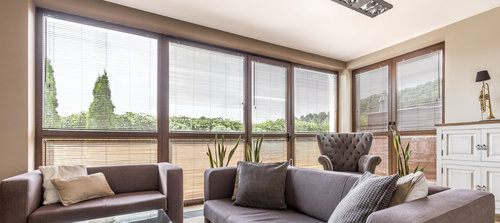Wood vs Vinyl Windows
Wood Windows
$10,500 - $12,000
(10 48-inch sash windows installed)
VS
Vinyl Windows
$7,700 - $9,800
(10 48-inch sash windows installed)
Cost varies greatly by region (and even by zip code).
Find out how much your window project will cost
Wood Windows

Pros
+ Traditional appearance
+ Can be painted or stained any color
+ Many options to choose from
+ Durable and long-lasting
+ Improves resale value of home
+ Energy-efficient
Cons
- High-maintenance
- Burns in a fire
- Can splinter or rot over time
- More expensive
- Harder to install
- Will not enhance security of the home
Get free advice and estimates from pros in your city.
$10,500 - $12,000
(10 48-inch sash windows installed)
Vinyl Windows

Pros
+ Low-maintenance
+ Less expensive
+ Will not burn in a fire, splinter, or rot
+ Easier to install
+ Energy-efficient
+ Improves resale value of home
Cons
- Will melt in high temperatures
- Can warp with expansion
- Will not enhance security of the home
- Fewer options
- Plastic appearance
- May not be as durable or long-lasting
Get free advice and estimates from pros in your city.
$7,700 - $9,800
(10 48-inch sash windows installed)
Related comparison guides
Related cost guides
Bay Window Installation
Casement Window Replacement
Curtain Installation
Double-Pane Window Replacement
Egress Window Installation
Fiberglass Window Installation
Garden Window Installation
Glass Block Window Installation
Home Window Tinting
Hurricane Shutters
Picture Window Installation
Sash Window
Shutters Installation
Skylight Installation
Skylight Repair
Sliding Window Installation
Stained Glass Repair
Storm Windows Installation
Vertical Blinds Installation
Vinyl Window
Weather Stripping
Window Blinds
Window Cleaning
Window Frame Repair
Window Glass Replacement
Window Repair
Window Replacement
Window Replacement in Florida
Window Screen Installation
Window Shades
Window Trim
Wood Window